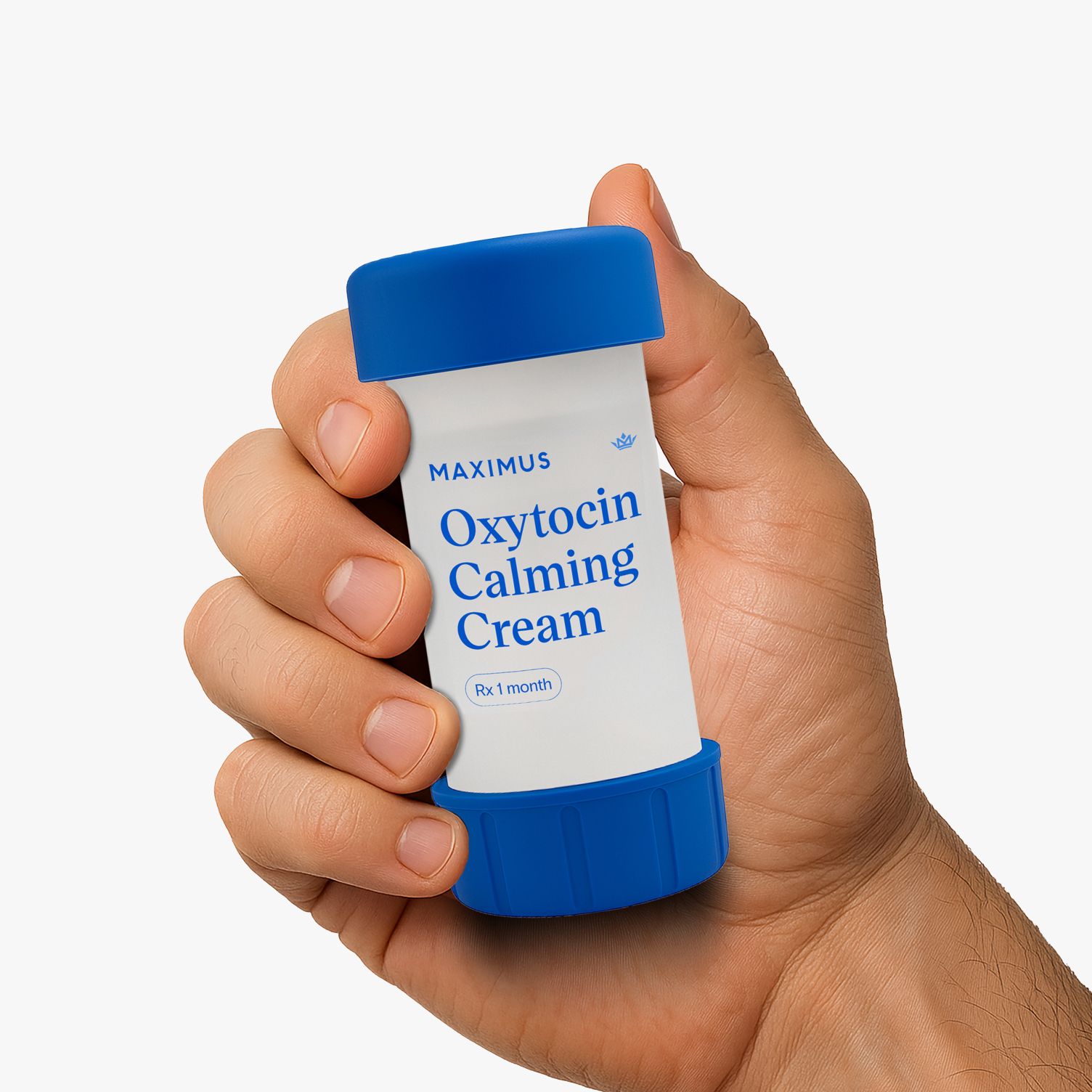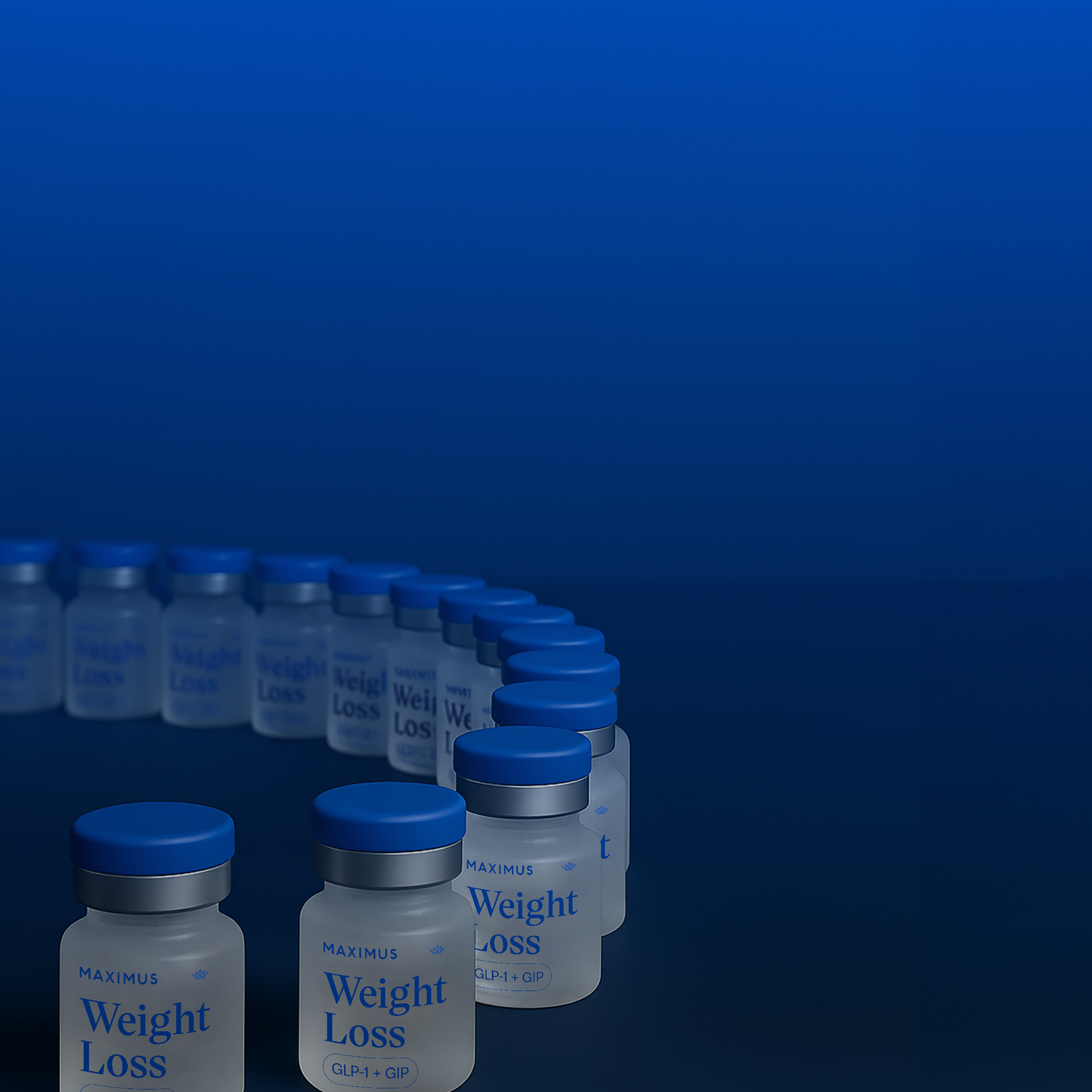By Starling Krentz, MS and Gabriel Alizaidy, MD, MS
A new study on Semaglutide just came out claiming it preserves lean mass and improves muscle function during weight loss. The headlines promise preserved lean mass, better grip strength, maintained metabolic efficiency.
SEMALEAN followed 106 patients on Semaglutide 2.4mg for a full year, using DXA scans to measure body composition and grip strength tests to assess muscle function. This of course sounds impressive, until you dive into the data and look past the headlines.
The Real SEMALEAN Numbers
Weight Loss:
- 10% at 7 months, 13% by month 12
- 59% achieved at least 10% weight loss
- 26% lost 15% or more
Lean Mass:
- Decreased by 6.6 lbs at 7 months
- Plateaued from month 7 to 12
- As a percentage of bodyweight, increased from 45% to 49%
Grip Strength:
- Increased by 8.1 lbs at month 7
- Reached 9.0 lbs improvement by month 12
- Sarcopenic obesity (where a person has both obesity and sarcopenia, which is a loss of muscle mass and function) decreased from 49% to 33%
Where This Falls Apart
Problem #1: They Still Lost 6.6 lbs of Lean Mass
The study celebrates that lean mass "stabilized" after month 7. But patients still lost 6.6 pounds of lean mass in those first 7 months. That's not trivial.
And remember, "lean mass" includes everything that isn't fat: organs, bone, connective tissue, water. The actual muscle loss is likely even more substantial, but they didn't measure it directly.
Problem #2: Grip Strength Is a Lagging Indicator
The researchers point to the 9.0 lb grip strength improvement as evidence that muscle function improved. But grip strength naturally increases when you lose substantial weight for three physiological reasons:
Reduced inflammation. Obesity creates chronic inflammation that impairs muscular function. Weight loss improves nerve signal transmission to muscles.
Improved insulin sensitivity. Better glucose metabolism enhances muscle quality and contractile function, even without gains in muscle mass.
Relative strength. When you're carrying less fat mass, existing muscle works more efficiently. It's the same reason pull-ups become easier after losing 20 pounds.
Grip strength typically declines about 1% per year after age 40. The fact that these patients didn't see a decline doesn't mean they preserved muscle, but instead that the benefits of fat loss temporarily masked the muscle loss. Grip strength is a lagging indicator of muscle mass changes. You can lose significant muscle mass before grip strength measurably declines.
Problem #3: The Percentage Game
The researchers emphasize that lean mass as a percentage of total bodyweight increased from 45% to 49%. But if you lose 13% of your body weight and most of that is fat, the proportion of lean mass will increase even if the absolute amount decreases.
Here's an example:
- Start: 280 lbs bodyweight, 128 lbs lean mass = 45.7%
- After: 244 lbs bodyweight, 121 lbs lean mass = 49.5%
You could lose 6.6 lbs of lean mass, but your percentage of lean mass increased because you lost substantially more fat. The researchers frame this as "preserved lean mass," but what actually was preserved was just the ratio, not the tissue itself.
Conflicts of Interest Worth Noting
One of the study authors works for Novo Nordisk, which happens to be the company that manufactures Semaglutide. When a manufacturer-funded study concludes their drug "preserves lean mass" despite demonstrating 6.6 lbs of lean mass loss, we should certainly remain skeptical.
A more accurate conclusion would be: "Semaglutide causes initial lean mass loss that stabilizes after 7 months, with functional improvements driven by fat loss rather than muscle preservation." But that's not nearly as exciting as the circulating headlines.
What's Actually Happening With GLP-1s
The mechanism is straightforward. GLP-1s cause rapid weight loss through appetite suppression. When you dramatically reduce calories without adequate protein and resistance training, you lose muscle. There's no debating this relationship.
There's also a recovery problem worth considering. Building muscle after significant loss, especially in middle-aged or older adults, is exponentially harder than maintaining it in the first place. Once it's gone, recovery requires years of dedicated work.
The "Ozempic face" and "Ozempic butt" phenomenon people notice aren't merely aesthetic concerns. They're visible manifestations of the systemic lean mass loss that DXA scans are measuring.
How to Maintain Muscle on GLP-1s
If you're using GLP-1 medications, here's what the current literature supports for muscle preservation:
1. Substantially Increase Protein Intake
Target 0.7-1.0g per pound of goal bodyweight. Distribute it across meals: 30-40g per meal, 4-5 times daily. Prioritize high-quality sources like eggs, meat, fish, and dairy.
2. Resistance Training Is Essential
Complete a minimum of three sessions per week with full-body movements. You need to consistently increase weight or volume over time, with a focus on building strength.
3. Moderate the Rate of Weight Loss
The optimal rate is 0.5-1% of body weight per week. Faster loss means greater muscle loss, regardless of medication.
4. Consider Testosterone Optimization (For Men)
If you're a man losing significant weight on GLP-1s, you're subjecting your body to considerable metabolic stress. Your testosterone levels are likely declining in response to a reduction in calories, rapid fat loss, and overall stress.
You should seriously consider optimizing testosterone during this period. This isn't about bodybuilding. It's about protecting muscle mass during a metabolically vulnerable time. Testosterone is the primary driver of muscle protein synthesis. Maintaining optimal levels represents the difference between losing primarily fat versus losing substantial muscle.
At Maximus, we address this through hormone optimization protocols designed specifically to protect muscle mass during periods of metabolic stress.
The Bottom Line
SEMALEAN doesn't demonstrate that Semaglutide "preserves" lean mass. It demonstrates that Semaglutide causes 6.6 lbs of lean mass loss in the first 7 months, which then stabilizes. The grip strength improvements are driven by the metabolic benefits of fat loss, not muscle preservation.
GLP-1s work. They work well, almost too well. When weight loss happens this rapidly, muscle loss becomes a legitimate concern. But here's the thing: we have the tools to prevent it. High protein intake, resistance training, testosterone optimization. These aren't specialized interventions. They're fundamental strategies you should be doing anyway, regardless of whether you're on GLP-1s or not.
----
Disclaimer: The contents of this article, including, but not limited to, text, graphics, images, and other information, is for information purposes only and does not constitute medical advice. The information contained herein is not a substitute for and should never be relied upon for professional medical advice. The content is not meant to be complete or exhaustive or to be applicable to any specific individual's medical condition. You should consult a licensed healthcare professional before starting any health protocol and seek the advice of your physician or other medical professional if you have questions or concerns about a medical condition. Always talk to your doctor about the risks and benefits of any treatment. Never disregard or delay seeking professional medical advice or treatment because of something you have read on this site. Maximus does not recommend, endorse, or make any representation about the efficacy, appropriateness, or suitability of any specific test, products, procedures, treatments, services, opinions, healthcare providers or other information contained herein. Maximus is not responsible for, nor will they bear any liability for, the content provided herein or any actions or outcomes resulting from or related to its use.
----





